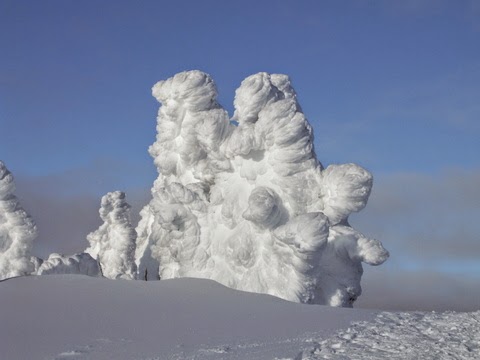 |
| Snow Ghosts Are Not Friendly |
When we teach a blind person, we use hand signals and verbal backup instructions, while holding hands and skiing in a snowplow position. During our training, one person, the instructor, skied backwards in front of and guiding the `blind' person. Spreading the hand is the way to say "slow down" to a person who, without sight, does not have a sense of speed or the meaning of "slow down". Instead spreading the hand means to make a large wedge angle with your feet. Compressing the hand means the opposite, and therefore speeds up. Pressing down on one hand meant turning in that direction. It was amazing how well these simple commands worked. The sensation was exhilarating for both of us.
Then we tried guiding using two 10 foot belt webs, one for each hand with the instructor behind. This did not work as well for me as the `blind' person. All my training failed me and I started to sink. I found out how valuable these senses are which we so easily take for granted.
Skiing is about feeling. Try the "feel your feet" part of lesson 1 in my manual with your eyes closed, then open, then closed, etc. AR
No comments:
Post a Comment